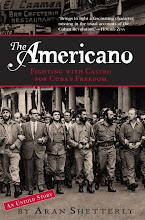Monday, February 15, 2010
A Perfect Red
I am reading Amy Butler Greenfield´s book, A Perfect Red, which explores the economic and social history of cochineal, an insect that grows on the nopal cactus and is the source of the world´s best, natural red dye. It is a marvelous history, thoroughly researched, easy to read. It opens up the transition between Aztec Mexico and Spanish Mexico in some interesting ways. For example, it describes in great detail the way in which the Spanish stepped in as beneficiaries of the tribute system set up over centuries by the Aztecs; they displaced and replaced the Mexicans at the mouth of a river of cacao, corn, gold, silver, textiles, and cochineal delivered by subjects spread out over a vast geographical area. The book is also enlightening on the social importance of color, particularly red. Highly recommended for anyone interested in the history of the Americas, textiles, the power of fashion, or the economic relationships between the New World and the Old World. If you get really interested in cochineal you can visit Oaxaca where it continues to be produced and used in the dyeing of textiles, particularly the beautiful rugs produced by the weavers of Teotitlan del Valle.
Sunday, February 14, 2010
Comparing Governments
I recently came across this interesting article by Stephen Kinzer published in the Guardian. In it, he compares the rights and services provided to citizens in Cuba vs. those in other non-state socialist Caribbean and Central American countries. As he lays it out, education, security, health care for Cubans, vs. the legal right (if difficult to realize in practice) to freedom of speech and opportunity for poor Guatemalans, Salvadorans, and others, who often live in fear and have little access to health care and education.
It is a more open approach than you often see in the press, posing a question to readers: Which would you choose? A government in control that curtails your freedoms of speech, commerce, and movement but delivers basic services (you can argue the quality of the Cuban services, but the UN´s health statistics show they do much better than most), or a government that extends these rights on paper, but often can´t guarantee them in practice and doesn´t deliver on the services?
The article reminded me of a conversation I participated in when I was doing research in Cuba in 2002. I was at a cafe with a Cuban artist and an American woman who had just arrived in Cuba from a couple of weeks in Guatemala.
¨Wow,¨ said the woman. ¨Cuba is impressive. I don´t see the misery here that I saw in Guatemala.¨
The Cuban painter bristled at her comment. ¨How can you compare Cuba to Guatemala?¨ he began. ¨We don´t have an indigenous population. Everyone speaks Spanish here, unlike Guatemala. We have good infrastructure, much of which was built in the 1950s. We are a small country, with resources, and cultural cohesion. We shouldn´t be compared with Guatemala. We should be compared with Switzerland. And, if you do that...how do we stand up?¨
It was a paradigm adjusting moment for those of us listening. How do you begin to compare nations? What is a fair comparison? What isn´t? And for sure, if Cuba´s freedoms and services are measured against Switzerland rather than against Guatemala or El Salvador or Nicaragua, the perspective changes.
That said, I think that Kinzer´s question is provocative: If you had to choose, which would be more important to you? The freedom to get the health care you need when you need it, or the freedom to say and publish what you think about your government?
But maybe framing the question this way, as the Cuban painter suggested, is misleading and gives weight to a false dichotomy. What do you think?
It is a more open approach than you often see in the press, posing a question to readers: Which would you choose? A government in control that curtails your freedoms of speech, commerce, and movement but delivers basic services (you can argue the quality of the Cuban services, but the UN´s health statistics show they do much better than most), or a government that extends these rights on paper, but often can´t guarantee them in practice and doesn´t deliver on the services?
The article reminded me of a conversation I participated in when I was doing research in Cuba in 2002. I was at a cafe with a Cuban artist and an American woman who had just arrived in Cuba from a couple of weeks in Guatemala.
¨Wow,¨ said the woman. ¨Cuba is impressive. I don´t see the misery here that I saw in Guatemala.¨
The Cuban painter bristled at her comment. ¨How can you compare Cuba to Guatemala?¨ he began. ¨We don´t have an indigenous population. Everyone speaks Spanish here, unlike Guatemala. We have good infrastructure, much of which was built in the 1950s. We are a small country, with resources, and cultural cohesion. We shouldn´t be compared with Guatemala. We should be compared with Switzerland. And, if you do that...how do we stand up?¨
It was a paradigm adjusting moment for those of us listening. How do you begin to compare nations? What is a fair comparison? What isn´t? And for sure, if Cuba´s freedoms and services are measured against Switzerland rather than against Guatemala or El Salvador or Nicaragua, the perspective changes.
That said, I think that Kinzer´s question is provocative: If you had to choose, which would be more important to you? The freedom to get the health care you need when you need it, or the freedom to say and publish what you think about your government?
But maybe framing the question this way, as the Cuban painter suggested, is misleading and gives weight to a false dichotomy. What do you think?
Subscribe to:
Posts (Atom)




